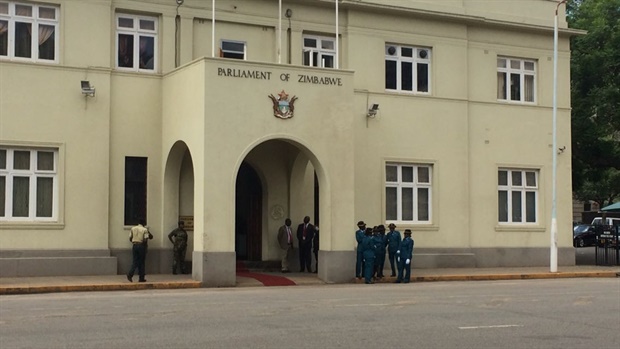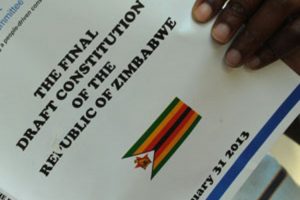Ed. note: Litigation finance is transforming the fields of both law and finance. To help our readers gain a better understanding of what litigation finance entails, we’ve partnered with Lake Whillans to present a new series so you can better understand how litigation funding works, its pros and cons, and its past, present, and future.
The growth of litigation finance (also known as litigation funding or third-party funding) has been a hot topic in recent years, but even if you’ve heard of the general concept, you may be less familiar with the range of litigation finance options. Much like other forms of finance, there are different structures that can meet the needs of a particular claimholder, matter, and/or firm. This article will review the basic features of a litigation finance investment and describe some of the different structures or “flavors” of litigation finance. Lake Whillans has and will transact in any of the “flavors” described below.
The Cone – Non-recourse capital
All forms of litigation finance share a common feature, which is the non-recourse provision of capital in connection with a legal claim (or set of claims). That means that the funder receives a return on its investment only if the underlying case or set of claims is successful, but if the case fails, the funder is owed nothing. In the successful scenario, the litigation financier recovers its invested capital, plus a portion of the litigation proceeds. The allocation of proceeds between the claimholder and the funder (and counsel where counsel has a contingent stake) will depend on terms negotiated at the outset and memorialized in the funding agreement, which is generally structured as a purchase of the claim proceeds. Lake Whillans aims to structure deals such that the majority of the proceeds remains with the claimholder.
Plain Vanilla – Single-Case finance
In the simplest structure, the funder enters an agreement with the claimholder to pay the legal fees and expenses associated with litigating a single case (e.g., lawyer and experts). This enables the claimholder to remove from its balance sheet the risk of pursuing the claim: because the claimholder does not spend its own capital on legal expenses, there is no hit to the balance sheet on an unpredictable and ongoing basis. Although the claimholder must keep the funder apprised of developments as the case progresses, the claimholder maintains independent control over case strategy. For example, the claimholder decides whether to accept any settlement offer. Lake Whillans funds single cases pending in U.S or Canadian courts, or in an arbitration proceeding worldwide. For a single case investment, we generally invest between $1-$15 million and a flexible rule of thumb is that the anticipated damages should exceed the invested amount by a factor of ten.
One variable in a single-case litigation finance deal is how much risk the claimholder’s counsel takes on. At one end of the spectrum, the funder is paying 100% of the legal fees at the counsel’s standard hourly rate as amounts come due as well as the other expenses associated with the litigation or arbitration. At the other extreme, counsel may agree to take the case on a full contingency for the legal fees, and the funder is only paying for other expenses associated with the litigation (e.g., experts and other out-of-pocket expenses). Often a deal will fall somewhere in the middle: the lawyers will be guaranteed a certain payment from the funder (either a percentage of its earned fees or all its fees up to a cap), but will still have some “skin in the game,” generally either as a contingent percentage of proceeds or an additional percentage on the unpaid fees. The flexibility to negotiate such arrangements with counsel and a funder makes it possible for a claimholder to select from a wider range of counsel than if it were to choose only among lawyers willing to work on full contingency, and allows firms to offer alternative structures that balance the need for certain and ongoing income with sharing in potential upside. Unlike some funders, Lake Whillans does not require that the firm take risk in order for us to fund a matter, but we are open to sharing risk with a firm.
Rum Raisin – Defense-Side Funding
Most often, in a single-case financing, litigation funders are financing the claimholder who is seeking monetary damages, from which the funder can take its share if successfully obtained. However, in some instances, we are able to finance a defendant. Funding is available to a defendant when a “win” for that defendant allows it to continue to hold some right or asset, which is tied to an income stream that can be shared with the funder. A common fact pattern we encounter is when a defendant is sued for breach of contract and the plaintiff seeks a declaratory judgment that the contract is terminated, and a “win” for the defendant means it continues to hold the right to continue to perform the contract and reap its benefits. For example, that could be the continued exclusive right to sell or distribute a product in a certain geography pursuant to a distribution agreement, or continued rights to valuable IP under a license agreement. Lake Whillans’ return in those examples would come from the revenue earned from the product sales that were able to continue after successfully defending the claims. (Or from a settlement that included a buy-out of the contractual rights). Other examples where defense-side funding might work include disputes over ownership of real estate or companies or other monetizable assets.
Neapolitan – Portfolio Finance
Although single-case funding dominated litigation finance in its early years, portfolio funding has become increasingly central to the industry as it has matured. In a portfolio funding deal, the litigation financier invests in a set of claims either held by the same claimholder or litigated by the same law firm. By aggregating claims, a claimholder can generally obtain funding at a lower cost of capital: the funder is willing to accept a lower return because investing in a portfolio is less risky than investing in a single claim with a binary outcome.
For companies, portfolios may include a few larger claims or a number of smaller claims that may not otherwise have been pursued. The financing may be used not only to support the costs of the portfolio of affirmative claims, but may also include additional amounts given directly to the company that can be used to pay legal costs for matters in which the company is a defendant.
For a law firm, a portfolio funding deal can enable it to take cases on contingency or grow a book of contingency cases at reduced risk to the firm. The funder will provide capital to the firm based on the expected contingent fees it may receive from the portfolio. The firm can use this capital to pay the recurring expenses of the firm, smooth cash flow, and/or grow the firm while the cases are ongoing. This type of funding can be particularly useful for firms involved in a number of cases that have many years ahead before likely monetization or for a firm that is actively growing in order to service existing cases and attract new ones. For firms just beginning to build a contingency portfolio, either internally driven or because of client-pressures to do so, funding can ease the cash flow challenges and mitigate the risk of contingency arrangements. The structure and pricing of these transactions can vary depending on the size of the portfolio, the risk associated with it, the quantum and timing of cash flows, whether the case portfolio is fixed or growing, as well as other factors.
Cookie Dough – Monetization of claims
Whether a litigation funding agreement covers a single case or a portfolio of cases, it may include monetization of underlying claims. This means that the funder will pay a portion of the anticipated recovery directly to the claimholder based on the claim’s expected value and time to monetization. The capital provided to the claimholder need not be used for the litigation costs, but by the claimholder for an array of purposes, including operating expenses, servicing debt, R&D, or a host of other purposes. Monetization could be part or all of a single case or portfolio finance deal. For example, this structure may be attractive to a claimholder after it has secured a judgment or arbitration award, but is facing a lengthy appeal or collection battle and would benefit from obtaining capital today rather than waiting months or years. Lake Whillans is also able to make outright purchases of claims that are susceptible to valuation, but still carry litigation and timing risk, for example, claims for class members in large antitrust matters (e.g., we are able to purchase or finance claims in the pending Visa Mastercard antitrust litigation).
For a claimholder with limited resources, upfront monetization can provide non-recourse capital to fund operating expenses of the business while it endures the potentially lengthy litigation of its claim. For a large corporate, this structure can be useful to self-fund the legal department with respect to other legal expenses, and thus mitigating the legal department’s status as a pure cost center.
* * *
Ultimately, every litigation finance deal is unique, and the structure and terms will depend on a broad range of variables. These include the value at stake relative to the projected litigation cost, the strength of the claims, the finances of the claimholder and defendant, the stage of the litigation, and anticipated obstacles to enforcing a favorable judgment. An experienced provider of litigation finance like Lake Whillans will tailor a funding agreement to meet the needs of the claimholder, counsel, and funder. The best way to determine what structure best fits the needs of your situation is to contact us.













 Kathryn Rubino is a Senior Editor at Above the Law, and host of
Kathryn Rubino is a Senior Editor at Above the Law, and host of 


 Jordan Rothman is a partner of
Jordan Rothman is a partner of 
